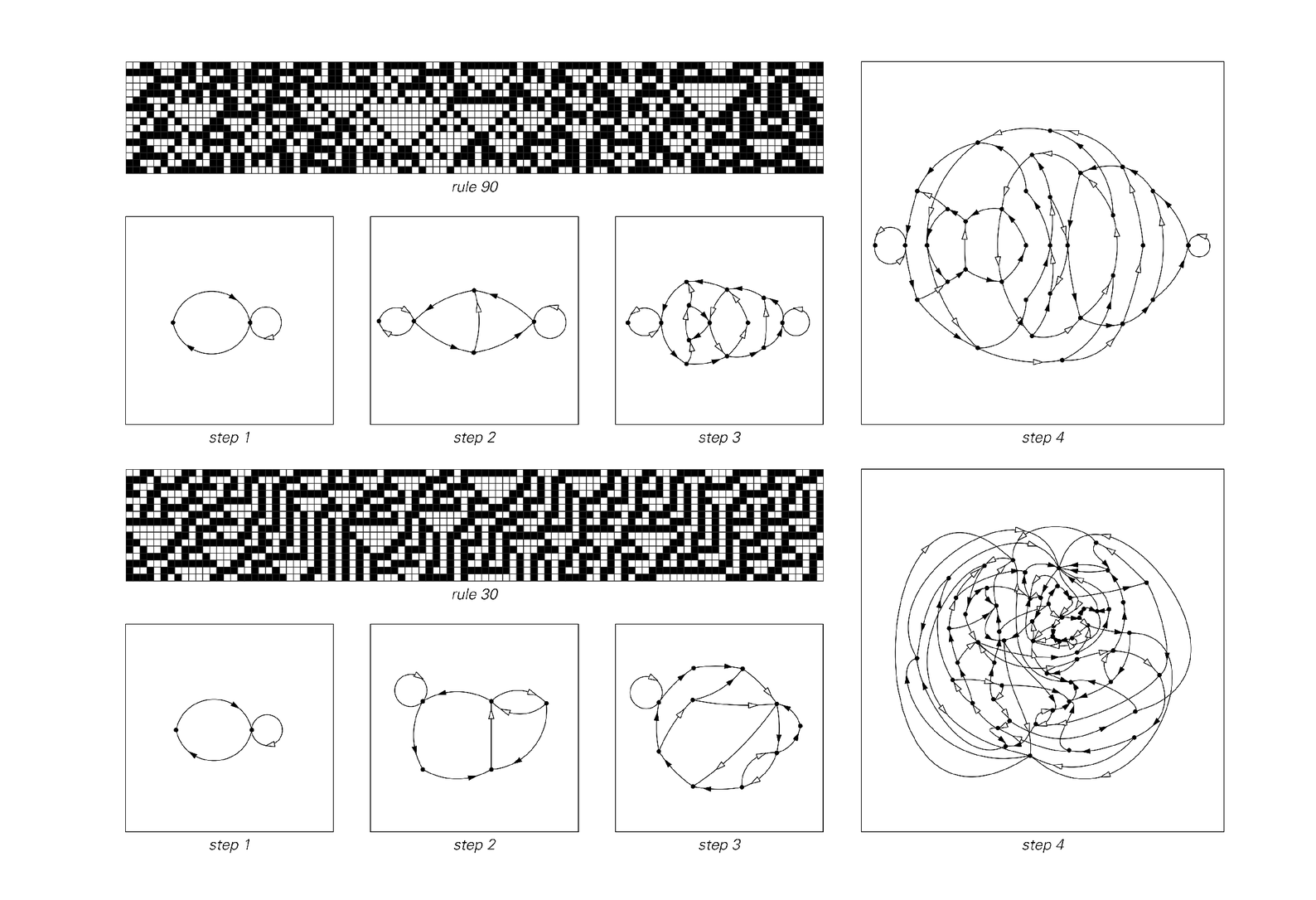And indeed if one starts with almost any other initial conditions—say for example ones that do not allow any pair of black cells together, then as the second set of pictures below illustrate, rapidly increasing complexity in the sets of sequences that are allowed is again observed.

Examples of cellular automata which continue to allow all possible sequences of black and white cells at any step in their evolution. Such cellular automata in effect define what are known as surjective or onto mappings.

Networks representing possible sequences that can occur in the evolution of the cellular automata at the top of the page, starting from initial conditions in which black cells are only allowed to appear in pairs.